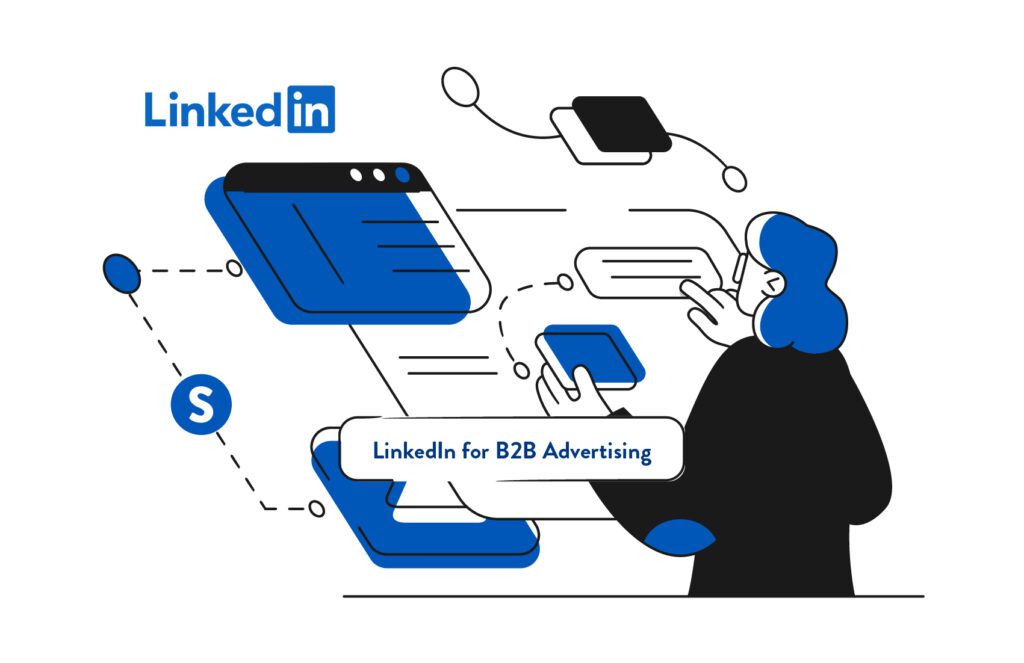LinkedIn for B2B Advertising: 5 Strategies to Elevate Your Brand

LinkedIn has emerged as the powerhouse platform for B2B advertising, offering opportunities to connect with decision-makers, build brand authority, and drive meaningful engagement. But to truly leverage LinkedIn’s potential, you need a well-thought-out strategy that goes beyond simply running ads. In this blog, we’ll explore how to use LinkedIn effectively for B2B advertising and provide actionable tips to maximize your results.
1. Define Your Audience with Precision
One of LinkedIn’s greatest strengths lies in its sophisticated targeting capabilities. Unlike other social platforms, LinkedIn allows you to target users based on professional criteria such as job title, company size, industry, and even specific companies. This precision ensures that your ads reach the decision-makers who matter most to your business.
Actionable Tip: Use LinkedIn’s Matched Audiences feature to upload your existing contact lists or target companies that are on your account-based marketing (ABM) list. This helps you tailor your messaging to a warm audience already familiar with your brand.
2. Craft Compelling Sponsored Content
Sponsored content is one of the most effective ad formats on LinkedIn, appearing directly in the news feeds of your targeted audience. To capture attention, your content must be engaging, relevant, and offer real value to your audience. This could be in the form of thought leadership articles, industry insights, or compelling case studies that showcase your expertise.
Actionable Tip: Use strong visuals and headlines that address specific pain points or trends in your industry. Include clear calls to action that guide prospects to take the next step, whether it’s downloading a white paper, registering for a webinar, or contacting your sales team.
3. Leverage LinkedIn InMail for Personalized Outreach
LinkedIn InMail allows you to send personalized messages directly to the inboxes of your target audience. This can be an incredibly powerful tool for B2B advertising, especially when reaching out to high-value prospects or decision-makers. The key to success with InMail is personalization—generic messages are unlikely to resonate.
Actionable Tip: Personalize your InMail messages by referencing the recipient’s specific role, company, or recent achievements. Offer something of value, such as exclusive content, a personalized demo, or an invitation to an industry event.
4. Utilize LinkedIn’s Analytics to Optimize Performance
LinkedIn offers robust analytics tools that provide insights into how your ads are performing. You can track metrics such as click-through rates (CTR), engagement, and conversion rates, and use this data to refine your campaigns. Understanding which ads resonate with your audience allows you to optimize your strategy and allocate your budget more effectively.
Actionable Tip: Regularly monitor your campaign’s performance and be ready to make adjustments. Test different ad formats, headlines, and calls to action to see what drives the best results. A/B testing can also help you identify the most effective messaging for your audience.
5. Engage with Your Audience Beyond Ads
LinkedIn is more than just an advertising platform; it’s a professional network where meaningful relationships can be built. Engaging with your audience through comments, posts, and group discussions can enhance your brand’s visibility and authority. By actively participating in industry conversations, you position your brand as a thought leader.
Actionable Tip: Encourage your team, especially those in leadership roles, to be active on LinkedIn by sharing insights, commenting on relevant posts, and participating in groups. This organic engagement complements your paid advertising efforts and helps build a stronger brand presence.
Applying These Strategies in Our Hometown of Greenville, SC
In Greenville, SC, a manufacturing company specializing in precision engineering could use LinkedIn’s targeting features to reach engineers and procurement managers at local automotive plants. By promoting in-depth case studies and technical white papers through sponsored content, they can position themselves as experts in their field. A local financial services firm might leverage LinkedIn InMail to reach CFOs and finance directors at mid-sized companies in the region, offering personalized invitations to a webinar on financial planning strategies tailored to the unique needs of businesses in the Upstate.
Conclusion
LinkedIn offers a wealth of opportunities for B2B advertisers to connect with key decision-makers, build brand authority, and drive business growth. By defining your audience with precision, crafting compelling sponsored content, leveraging personalized InMail, and engaging with your network, you can unlock the full potential of LinkedIn for your B2B advertising efforts. Whether you’re looking to generate leads, nurture relationships, or boost brand awareness, a well-executed LinkedIn strategy can deliver impactful results for your business.
To read more tips on B2B marketing strategies, check out our other B2B articles. If you’re interested in partnering with STORY to optimize your current marketing efforts, visit our website to learn more about our marketing services.